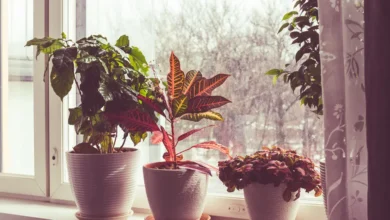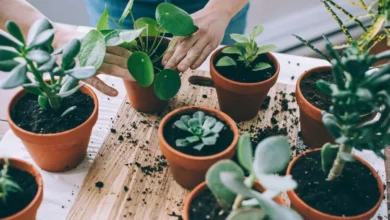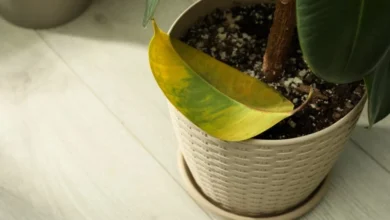Plant Propagation Mastery: Every Method Explained

My first propagation attempt was a pothos cutting in water. Watching those white roots emerge felt like magic. That single success sparked an obsession with multiplying plants. Five years later, I’ve propagated hundreds of plants using every method imaginable, learning what works and what doesn’t through extensive trial and error.
Plant propagation transforms your hobby from passive care to active creation. You’re not just maintaining plants – you’re making new ones. This skill saves money, lets you share with friends, and gives you backup plants in case originals fail.
In this comprehensive guide, I’m explaining every major propagation method with step-by-step instructions. You’ll learn which techniques work for which plants, success rates for each method, and how to troubleshoot common problems. Whether you’re a complete beginner or looking to expand your skills, this guide covers everything.
Understanding Propagation Basics
Before diving into specific methods, understanding fundamental concepts improves success across all techniques.
Why Plants Can Be Propagated
Most plants have remarkable regenerative abilities. Many can grow complete root systems from stem tissue, or entire plants from single leaves.
This ability evolved as survival mechanisms. Branches that break and touch ground can root, creating new plants. This natural process is what we’re harnessing.
Different plant families have different regenerative capacities. Some root from almost any tissue. Others require very specific conditions and techniques.
Understanding your specific plant’s propagation preferences dramatically improves success rates.
Timing Matters
Spring and early summer are ideal for most propagation. Plants are actively growing, and cuttings root faster in warm conditions.
Avoid propagating during dormancy. Winter cuttings often fail because plants aren’t producing growth hormones needed for rooting.
However, some methods work year-round. Division can happen whenever you repot. Leaf propagation of succulents works in any season with adequate light.
I time major propagation sessions for April and May. Success rates are dramatically higher than attempts during fall or winter.
Essential Supplies
Having proper supplies ready before starting prevents delays that reduce success:
Sharp, clean cutting tools (scissors or pruning shears) Rooting hormone (optional but helpful) Appropriate growing medium (water, soil, perlite, etc.) Clear containers for monitoring root development Labels for tracking varieties and dates
Cleanliness prevents infection. Always sterilize tools between plants with rubbing alcohol.
Stem Cutting Propagation
Stem cuttings are the most common and versatile propagation method. Most houseplants root successfully from stem cuttings.
Water Propagation Method
Water propagation lets you watch root development, making it perfect for beginners and satisfying for experienced growers.
Best Plants for Water Propagation:
- Pothos and philodendrons
- Tradescantia (wandering jew)
- Coleus
- Begonias
- African violets
Step-by-Step Process:
Cut 4-6 inch stem sections just below a node. Nodes are the bumps where leaves attach – this is where roots emerge.
Remove lower leaves that would sit underwater. Leave 2-3 leaves at the top for photosynthesis.
Place cuttings in clean water, ensuring at least one node is submerged. Use clear containers so you can monitor root development.
Position in bright indirect light. Too much direct sun heats water and promotes algae growth.
Change water weekly to prevent bacterial growth. Fresh water provides oxygen roots need.
Roots typically appear in 1-3 weeks depending on species and season. Wait until roots are 1-2 inches long before potting.
I keep a propagation station near my brightest window. Having multiple cuttings in one location makes maintenance easier.
When to Transition to Soil:
Once roots reach 1-2 inches, pot in appropriate soil mix. Longer water roots struggle adapting to soil.
Water thoroughly after potting. Keep soil consistently moist for the first week as roots adjust.
Expect some wilting during transition. This is normal as water roots adapt to extracting moisture from soil.
Soil Propagation Method
Rooting directly in soil skips the water-to-soil transition but requires more faith since you can’t see root development.
When to Choose Soil Over Water:
Plants that rot easily in water (succulents, many woody stems) Cuttings from plants that struggle transitioning from water roots When propagating many cuttings at once
Technique:
Prepare light, well-draining soil mix. Equal parts potting soil and perlite works well.
Dip cutting ends in rooting hormone powder if available. This encourages faster, stronger root development.
Insert cuttings 1-2 inches deep in moist soil. Firm soil gently around stems.
Create a humidity dome with a clear plastic bag over the container. This maintains moisture while roots develop.
Keep soil lightly moist but not soggy. Check every few days and mist if drying occurs.
Remove humidity dome for an hour daily to prevent fungal growth from excessive moisture.
Roots develop in 2-4 weeks typically. Test by gently tugging – resistance indicates rooting.
Success Indicators:
New growth appears at stem tips. This signals successful rooting.
Leaves remain firm and green. Wilting or yellowing suggests rooting failure.
Gentle tugging meets resistance. Rooted cuttings don’t pull out easily.
Hardwood vs Softwood Cuttings
Understanding stem maturity improves success with woody plants.
Softwood Cuttings:
Young, flexible growth from current season. These root fastest but are most delicate.
Best for: Most tropical houseplants, herbs, some shrubs
Take cuttings in spring when new growth appears. Success rates are highest with young tissue.
Hardwood Cuttings:
Mature, woody stems from previous year’s growth. These root slower but are more durable.
Best for: Woody houseplants like ficus, some succulents with woody stems
Take in late fall or early spring. The dormant period actually improves rooting for some species.
I’ve had much better success understanding this distinction. Trying to root woody ficus stems like soft pothos never worked until I adjusted my approach.
Leaf Propagation
Some plants grow entirely new specimens from single leaves. This method seems almost magical but works reliably for certain species.
Whole Leaf Propagation
Best Plants:
- African violets
- Peperomias
- Some begonias
Process:
Select healthy, mature leaves. Avoid the newest leaves (too immature) or oldest leaves (too weak).
Cut leaf with 1-2 inches of stem attached. The stem portion is where roots develop.
Insert stem into moist propagation mix or water. The leaf blade should rest on or above the surface.
Maintain high humidity with plastic covering or humidity dome. This prevents leaf desiccation before roots form.
New plants emerge from the base where stem meets leaf, usually within 4-8 weeks.
Multiple baby plants sometimes develop from one leaf. Separate carefully once they’re 1-2 inches tall.
Leaf Section Propagation
Best Plants:
- Snake plants (Sansevieria)
- Some begonias (rex varieties)
Snake Plant Technique:
Cut healthy leaf into 2-3 inch sections. Mark which end was “up” – orientation matters for rooting.
Let cuts dry for 24 hours. This calluses prevents rot when inserted in soil.
Insert bottom end 1 inch deep in barely moist soil or sand. Water very sparingly until roots develop.
New plants emerge from the buried end in 4-8 weeks. Growth is slow but reliable.
Begonia Leaf Technique:
Lay whole leaf flat on moist propagation mix. Use small pins or stones to hold it in contact with soil.
Cut through major veins in several places. Baby plants emerge from these cuts.
Maintain humidity and moisture. Multiple new plants develop across the leaf surface.
This method produces many plants from one leaf but takes 2-3 months for usable size.
Division Propagation
Division separates existing plants into multiple specimens. It’s the fastest way to get substantial new plants.
When Division Works Best
Ideal Candidates:
- Plants with multiple crowns or stems
- Spider plants with pups
- Ferns
- Peace lilies
- Snake plants
- Many grasses and grass-like plants
Timing:
Divide during repotting when roots are already disturbed. This minimizes additional stress.
Spring division gives plants the entire growing season to establish.
Avoid dividing stressed or unhealthy plants. Division further stresses them.
Division Process
Remove plant from pot and examine root structure. Some plants naturally separate into sections.
Gently tease roots apart with your hands. Use clean knife or shears only when roots are tightly tangled.
Ensure each division has adequate roots and growth points. Sections without roots rarely survive.
Pot divisions immediately in appropriate soil. Water thoroughly and keep consistently moist for 2 weeks.
Expect some wilting or leaf drop. This is normal recovery from division shock.
I typically get 2-4 new plants from a mature specimen through division. It’s my favorite method for plants that don’t root easily from cuttings.
Special Cases
Spider Plant Pups:
These baby plants form at the ends of runners. They often have roots already started.
Cut pups with scissors, leaving a small stem section. Pot immediately or root in water first.
Orchid Division:
Wait until orchids outgrow pots and have multiple pseudobulbs. Each division needs 3-4 pseudobulbs minimum.
Cut rhizome between pseudobulbs with sterilized knife. Pot divisions in orchid bark.
Fern Division:
Ferns often resist separation. Use a sharp knife to cut through the root mass if necessary.
Each section needs both roots and fronds. Sections with only roots won’t recover.
Offset and Pup Propagation
Many plants produce miniature versions of themselves attached to the parent. These are essentially pre-started new plants.
Succulent Offsets
Echeverias, haworthias, and many other succulents produce offsets around the base.
Wait until offsets are at least 1/3 the size of the parent plant. Tiny offsets have low survival rates.
Gently separate offsets with as many roots intact as possible. Some twist off easily; others need cutting.
Let cut surfaces dry for 24 hours before potting. This prevents rot at the wound site.
Plant in well-draining succulent mix. Water sparingly until growth indicates established roots.
Bromeliad Pups
Bromeliads die after flowering but produce pups at the base first. This is natural reproduction.
Let pups reach 1/3 the size of the parent before separating. Premature separation reduces success.
Cut pups from parent with sharp knife, including some roots if possible.
Pot in bromeliad-appropriate mix (bark-based, quick-draining). Keep central cup filled with water.
Air Plant Pups
Tillandsia (air plants) produce pups that remain attached, eventually forming clumps.
You can leave pups attached for a clustered display, or separate them for individual plants.
Gently pull pups away from parent once they’re 1/3 parent size. They should separate without tools.
Air Layering
Air layering creates roots on stems before cutting them from parent plants. This advanced technique works for plants difficult to root from simple cuttings.
When to Use Air Layering
Ideal Candidates:
- Rubber plants (Ficus elastica)
- Dracaenas
- Fiddle leaf figs
- Other woody houseplants
Advantages:
The cutting remains attached to parent plant while rooting, receiving water and nutrients throughout the process.
Success rates are very high since the cutting stays healthy until roots form.
Air Layering Process
Choose a healthy stem section 12-18 inches from the tip. This becomes your new plant.
Make an upward diagonal cut halfway through the stem. Or remove a 1-inch ring of bark.
Dust the wound with rooting hormone. This encourages root formation at the injury site.
Wrap damp sphagnum moss around the wound. Pack it generously, at least 3 inches thick.
Cover moss with plastic wrap, sealing both ends with tape or twist ties. This maintains moisture.
Roots should be visible through plastic in 4-8 weeks. Wait until you see substantial root mass.
Cut below the rooted section and remove plastic and moss carefully. Pot in appropriate soil.
The parent plant will eventually branch below the cut. You end up with two plants from one.
This method saved my leggy rubber plant. After air layering the top, I had one perfect new plant and the original sprouted multiple new branches.
Specialized Techniques
Some plants require unique propagation approaches based on their growth habits.
Rhizome Division
Plants growing from rhizomes (horizontal underground stems) propagate through rhizome division.
Common Examples:
- Snake plants
- ZZ plants
- Some ferns
Method:
Remove plant from pot and locate rhizomes (thick, horizontal root-like structures).
Cut rhizome into sections, ensuring each piece has at least one growth point (shoot).
Pot sections in appropriate mix. Keep barely moist until new growth appears.
Tuber Division
Tuberous plants store energy in swollen underground structures.
Examples:
- Caladiums
- Cyclamen
- Some begonias
Process:
Divide tubers during dormancy. Each section needs at least one “eye” (growth point).
Let cuts dry for 24 hours before planting. Dust with sulfur powder to prevent rot.
Plant at appropriate depth for species. Water sparingly until growth emerges.
Bulb Propagation
True bulbs (onion-like structures) produce small offsets called bulblets.
Method:
Separate bulblets during dormancy. These are miniature bulbs attached to parent bulb base.
Plant bulblets at shallow depth. They need several years to reach flowering size.
Rooting Hormones and Enhancers
These products increase success rates but aren’t always necessary.
When Hormones Help Most
Difficult-to-root species benefit significantly. Plants that naturally root easily show little improvement.
Woody cuttings almost always root better with hormone treatment.
Purchased hormones provide consistent results. Homemade solutions (willow water, cinnamon) work but with variable success.
Application Methods
Powder Form:
Dip moist cutting ends in powder. Tap off excess – too much can inhibit rooting.
Powder lasts longest in storage. Keep container sealed and dry.
Liquid/Gel Form:
More expensive but easier to apply evenly.
Some brands combine rooting hormone with fungicide. This prevents rot during rooting.
Natural Alternatives
Willow water contains natural rooting compounds. Soak willow branches in water for 24 hours, then use to water cuttings.
Cinnamon powder prevents fungal growth on cut surfaces. It doesn’t promote rooting but prevents rot.
Honey has mild antimicrobial properties. Some growers dip cuttings in diluted honey.
I use commercial powder for challenging species and skip it entirely for easy rooters like pothos.
Troubleshooting Propagation Problems
Even experienced growers face propagation failures. Identifying problems helps improve future success.
Cuttings Rotting Before Rooting
Causes:
Too much moisture in growing medium Poor air circulation Dirty tools introducing bacteria Cutting from unhealthy parent plant
Solutions:
Ensure growing medium is moist but not waterlogged Provide air circulation without cold drafts Sterilize all tools with alcohol Remove any decaying matter immediately
No Root Development
Causes:
Wrong season (propagating during dormancy) Insufficient light Cutting taken from non-viable tissue Water too cold
Solutions:
Wait for spring/summer for best results Move to brighter location Take cuttings from actively growing stems Use room temperature water
Leaves Yellowing or Dropping
Causes:
Normal adjustment process Insufficient humidity Too much direct sun Roots damaged during process
Solutions:
Some leaf loss is normal – monitor overall health Increase humidity with plastic covering Provide bright indirect light, not direct sun Handle roots gently during potting
Roots Appearing But Then Dying
Causes:
Water changed too infrequently Transition to soil done incorrectly Roots damaged during potting Soil staying too dry after potting
Solutions:
Change propagation water weekly Wait for adequate root length before transitioning Handle roots very carefully – they’re extremely fragile Keep soil consistently moist for first 2 weeks
Building Propagation Skills
Success comes from practice and observation. Start simple and gradually attempt more challenging techniques.
Beginner-Friendly Plants
Start with these reliable rooters:
- Pothos (almost foolproof)
- Tradescantia (roots in days)
- Spider plant pups (pre-rooted)
- Succulents from leaves (entertaining to watch)
Master these before attempting finicky species.
Keeping Records
Note propagation dates, methods used, and success rates. This data improves future attempts.
Take photos of the process. Visual records help identify what worked or failed.
Label all propagations immediately. It’s surprisingly easy to forget which cutting is which.
Learning from Failures
Every failed propagation teaches something. Was timing wrong? Technique inappropriate? Parent plant unhealthy?
Don’t give up on a species after one failure. Adjust variables and try again.
Some plants simply propagate more readily than others. That’s not your fault – it’s plant biology.
Conclusion
Plant propagation mastery comes from understanding plant biology and practicing various techniques. Each method has ideal applications and appropriate plants.
Start with simple water propagation of easy-rooting plants. Build confidence before attempting advanced techniques like air layering.
The most important factor is taking action. Your first attempts might fail, but each teaches valuable lessons.
Keep trying different approaches until you find what works for your conditions and plants. Success rates improve dramatically with experience.
The satisfaction of growing new plants from cuttings never gets old. Years later, I still find it exciting to watch roots emerge from stems.
Start a propagation project this week. Choose an easy plant, take a cutting, and begin your journey into plant multiplication. You’ll be amazed at what you can create.
Happy Planting, Jasmine







